5 Tips for AED Program Management in the Workplace
- Feb 26, 2018

Are your employees ready to respond to a cardiac emergency in the workplace?
The American Heart Association reported that in 2016, more than 350,000 out-of-hospital cardiac arrests occurred. OSHA estimates that 10,000 sudden cardiac arrests occur each year in the workplace. The importance of having an Automatic External Defibrillator (AED) in your workplace is clear, and in fact, many work environments already have AEDs and first aid kits. But are you and your employees truly prepared to respond to a medical emergency in the workplace?
Unfortunately, recent data indicates that most employees are not prepared to handle cardiac emergencies. In a survey about cardiac emergency preparedness conducted last summer, the American Heart Association discovered that most workers do not have access to CPR and first aid training and that fully half of them were unable to locate an onsite AED. In the hospitality industry, where employees are welcoming guests who are unfamiliar with a property, 66% of those surveyed cannot locate an AED.
In response to the findings, Michael Kurz, M.D., Associate Professor in the Department of Emergency Medicine at the University of Alabama at Birmingham School of Medicine, said, “the data suggests these untrained employees may be relying on their untrained peers in the event of an emergency, leaving employees with a false sense of security.”
At Cardio Partners, it’s our goal to help ensure that organizations and individuals are well-prepared and ready to act in the event of a cardiac or medical emergency in the workplace.
5 Best Practices for AED Program Management in the Workplace.
Enlist an AED and First Aid Advocate
Whether you work for a Fortune 500 corporation with thousands of employees and hundreds of AEDs or you’re an entrepreneur with a single AED and one or two employees, it’s important to make sure that your team is as committed to safety and emergency readiness as you are.
First, identify employees who are well-respected by their peers and who you think would be interested in helping you promote workplace safety and cardiac awareness. Be sure to share information about your AED program with them, including information about what AEDs are and how they work.
These in-house champions will help promote your emergency readiness plans and can educate their peers about the importance of AEDs and first aid training. They’ll also replace the false sense of security some untrained employees may feel with a clear resource for information and instruction about emergency first aid.
Keep Your AEDs in Plain Sight
Timing is critical when it comes to administering CPR or defibrillation. For every minute that passes without CPR or defibrillation, the chances of survival decrease 7-10% (American Heart Association).
For optimal AED placement, OSHA recommends that AEDs be conveniently installed to ensure a response within 3 to 5 minutes, near a confined space, in:
- Areas where many people work closely together, such as assembly lines and office buildings.
- Areas where electric-powered devices are used.
- Outdoor worksites where lightning may occur.
- Health units where workers may seek treatment for heart attack symptoms.
- Company fitness units and cafeterias.
- Remote sites, such as offshore drilling rigs, construction projects, marine vessels, power transmission lines, and energy pipelines.
- Invest in an AED Compliance Management System
- Make sure that your AEDs are in compliance and are emergency-ready with a user-friendly AED Compliance Management System. Online systems such as Cardio Partners’ Premium AED Compliance Management System ensure that your equipment is properly registered, checked, logged, and that your physician’s prescription is up-to-date. These systems can also help you track the expiration dates of your defibrillators’ batteries and pads.
- Spring for Training
- Now that you have an AED cheerleader, you’ve placed your devices strategically, and you’ve committed to an AED Compliance Management System, you’ll want to make sure that your employees know how to use your emergency medical equipment. You’ll also want to make sure they know how to recognize a sudden cardiac arrest and how they should go about activating your emergency response plan.
- It’s worth noting that more than 90% of the employees who participated in the two American Heart Association surveys said they would take employer-sponsored CPR and first aid training courses. Improve safety by boosting your employees’ confidence. Enroll your team in CPR, First Aid, and AED courses today!
- Practice Makes Perfect
- Be sure to include AEDs in your emergency response drills. Emergency readiness drills can help ensure that your employees know where your AEDs are located and how to use them.
- For more information about AED best practices in the workplace or to schedule a cardiac preparedness consultation, contact www.aed.com at 800-544-0004 or email us at customerservice@cardiopartners.com.





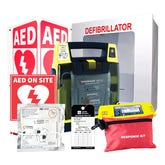
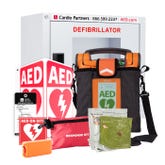
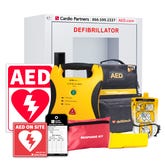
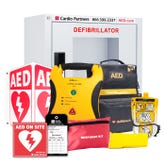
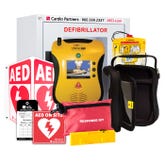
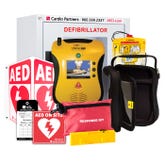
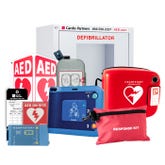
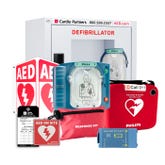
 CALL US:
CALL US: